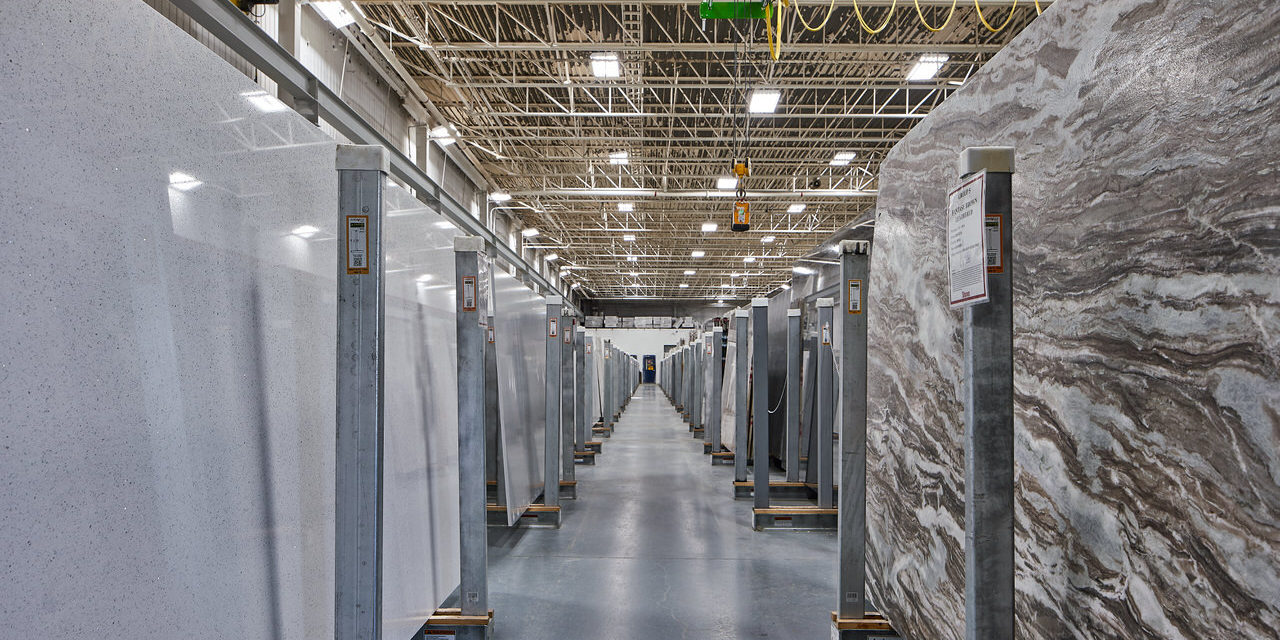Granite and quartz are two of the most popular natural stone choices for countertops, and for those doing construction or renovations, choosing between them can be a challenge. Making things even more complicated, there are several common misconceptions about each material. Here, we debunk the four most common myths about each so you can choose your material with confidence.
Granite
When it comes to natural stone, granite is one of the most popular choices for countertops. It’s elegant and timeless, and unique. Here are four common myths about granite, and the truth behind the claims.
Myth 1: Granite is expensive
When considering a countertop material, you’ll want to find something attractive and durable. The most affordable surfaces, like laminate and tile, may save you money in the short term but can’t compete over time. Granite is beautiful, long-lasting, and plentiful—this abundance has driven prices down. The cost of granite is in line with other natural stones, and it can increase the resale value of your home. Bottom line: While granite might look expensive, it’s available at different price points and the cost is offset by the value added to your home.
Myth 2: Granite is hard to maintain
Granite countertops need to be sealed, but this is not an onerous process. To maintain your granite, simply wash them down with a granite cleaner or soap and water and, once dry, apply on a granite sealer. The entire process takes less than fifteen minutes and you only need to reseal the surface every 12 to 18 months.
Myth 3: Granite is indestructible
Granite is one of the hardest countertop materials available, but that doesn’t mean that you can’t damage it. While it’s resistant to heat, stains, and scratches, it’s not impossible to damage it. For example, if you place a hot pot directly on your granite surface, you could cause a dull or cloudy appearance in the sealer. Using abrasive chemicals could potentially scratch granite, and a crack or chip might result from something very hard hitting the surface. Although it’s stain-resistant, a stain could be caused by oily substances or chemicals. However, stains can also be removed. With proper care, your granite countertop will retain its durability and gorgeous appearance.
Myth 4: Granite will lose its shine
The culprit in this myth is marble, not granite. With regular use, granite rarely shows wear but if you do notice dulling, you can apply a polish to make it sparkle again.
Quartz
Due to its durability, flexibility, and appearance, quartz is a top countertop option. Read on for more about this popular material.
Myth 1: Quartz and quartzite are the same thing
Given their names, it’s no surprise this one confuses people, but these are not the same material. Quartzite originates as sandstone and through a process of extreme heat and pressure becomes quartzite, which is a hard-metamorphic natural stone—and actually a kind of granite. Quartz, on the other hand, is an engineered material of stone, resin, and natural quartz material. Both are extremely durable.
Myth 2: Quartz lacks variety
This myth likely arises from the fact that quartz is engineered. Although quartz is manufactured in a factory and is a uniform material in terms of substance, it doesn’t lack variety. In fact, quartz can be made in colours and designs limited only by your imagination.
Myth 3: Quartz can never stain, burn, crack or chip
You would have to try really hard to damage a quartz countertop, but you could do it. Although they are very strong and heat resistant, they’re not indestructible. Any stone—and remember, quartz contains stone—can discolour, chip, or crack under extreme heat or from chemical solvents. That said, quartz is actually a top choice due to its durability.
Myth 4: Quartz only comes with a polished finish
This myth is just outdated information. Originally, quartz slabs were made with polished finishes but the technology has advanced and nowadays quartz can be produced with a textured or matte finish.
Granite and quartz are two of the most sought-after surfaces for countertops—and with good reason. Each is durable, beautiful, and practical. Understanding more about each material will help you select the very best option for your individual project.








